Abstract
Propanil (3′,4′-dichloropropionanilide) was a potent inhibitor of the nitrogenase activity of blue-green algae (cyanobacteria) in flooded soil, but the herbicide at comparable concentrations was not toxic to rice, protozoa, and nitrogen-fixing bacteria. Ethanol-amended flooded soils treated with propanil exhibited higher rates of nitrogenase activity than those not treated with the herbicide. The enhanced nitrogenase activity in propanil-treated soils was associated with a rise in the population of purple sulfur bacteria, especially of cells resembling Chromatium and Thiospirillum. By employing propanil and a means of excluding light from the floodwater to prevent the development of phototrophs during rice growth under lowland conditions, the relative activities of blue-green algae, photosynthetic bacteria, and the rhizosphere microflora were determined. The results suggest that the potential contribution of photosynthetic bacteria may be quite high.
Full text
PDF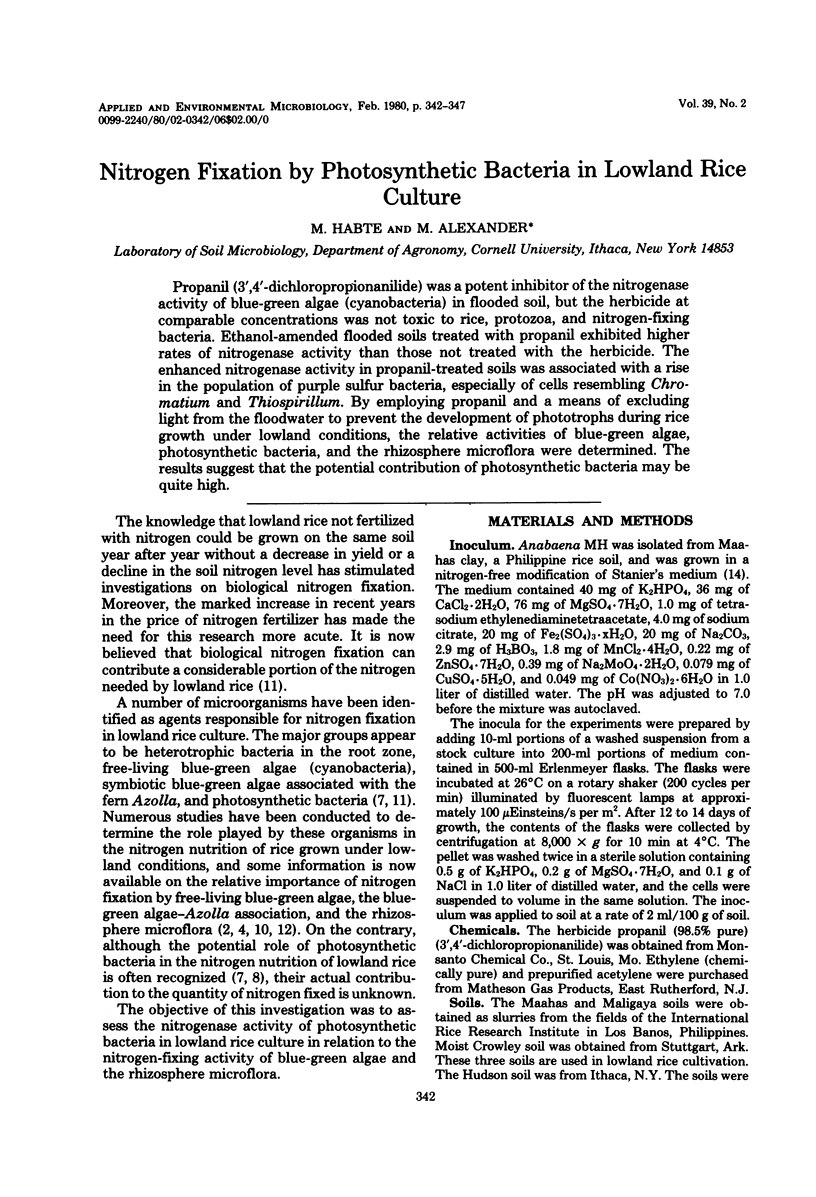
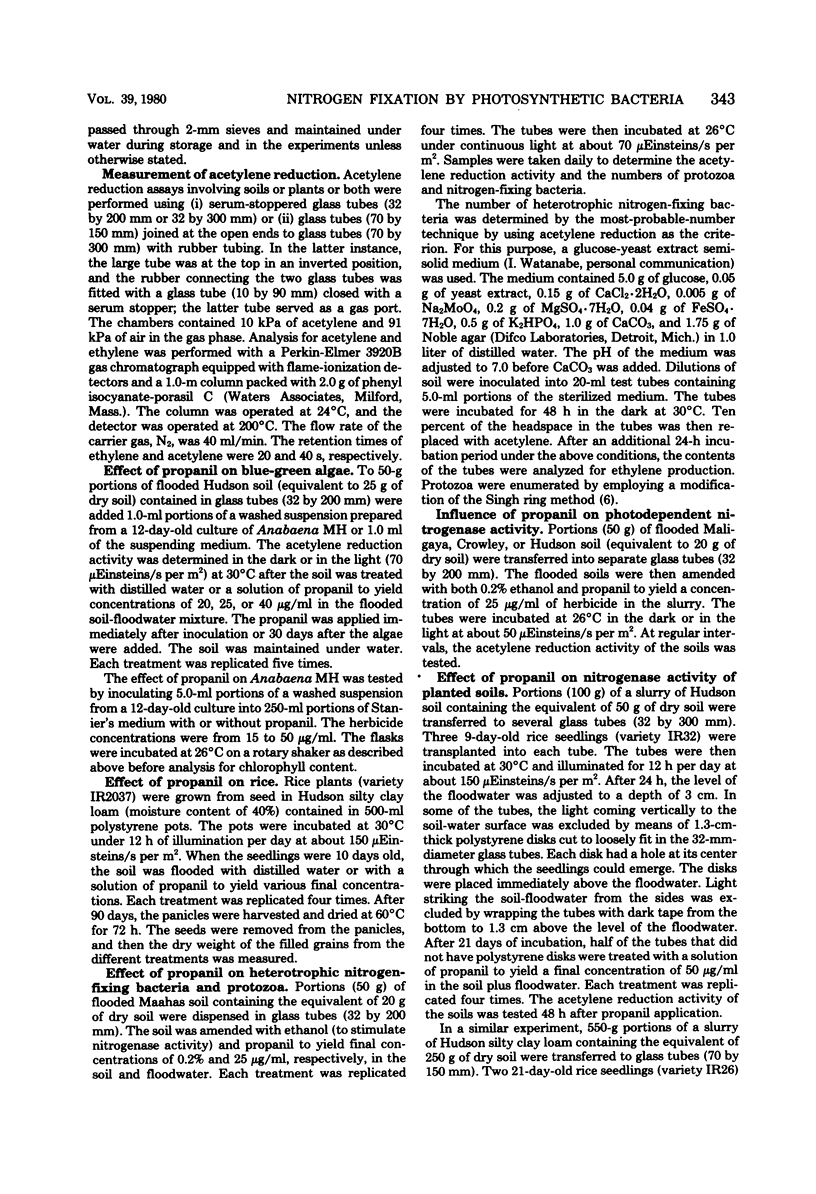
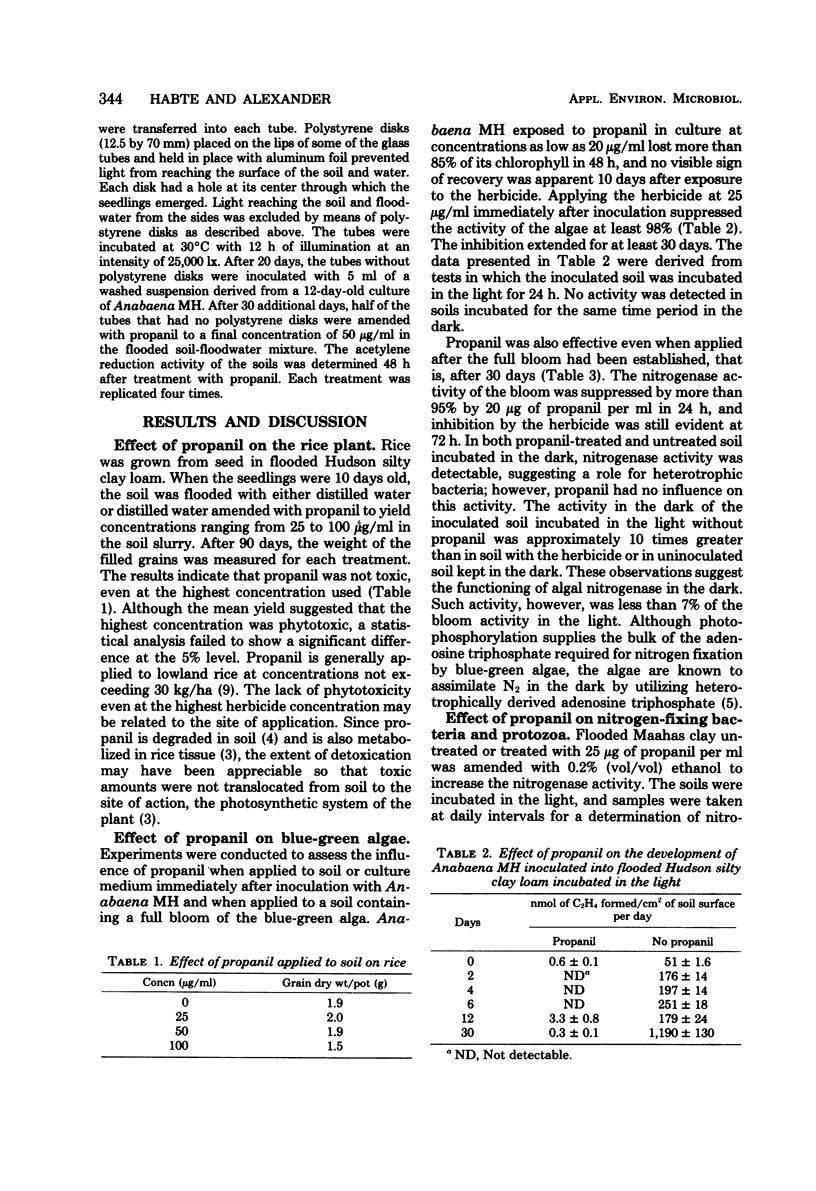
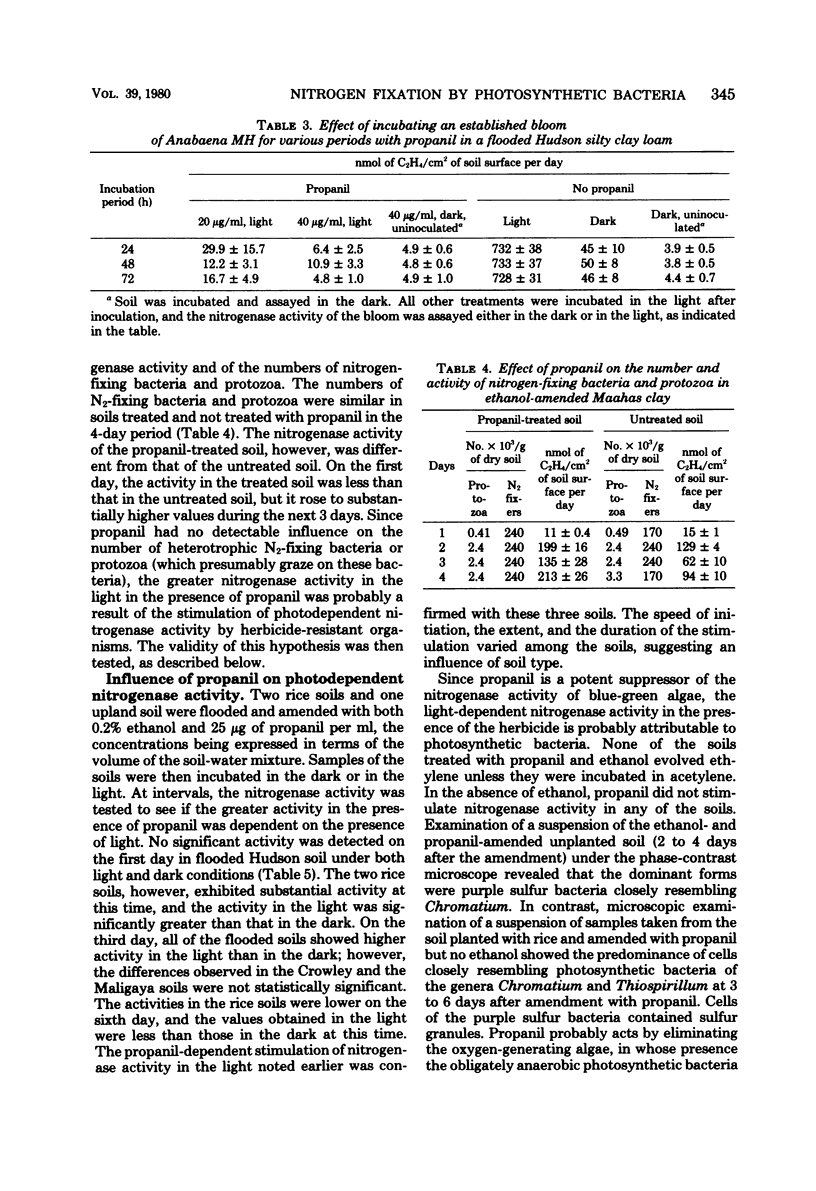
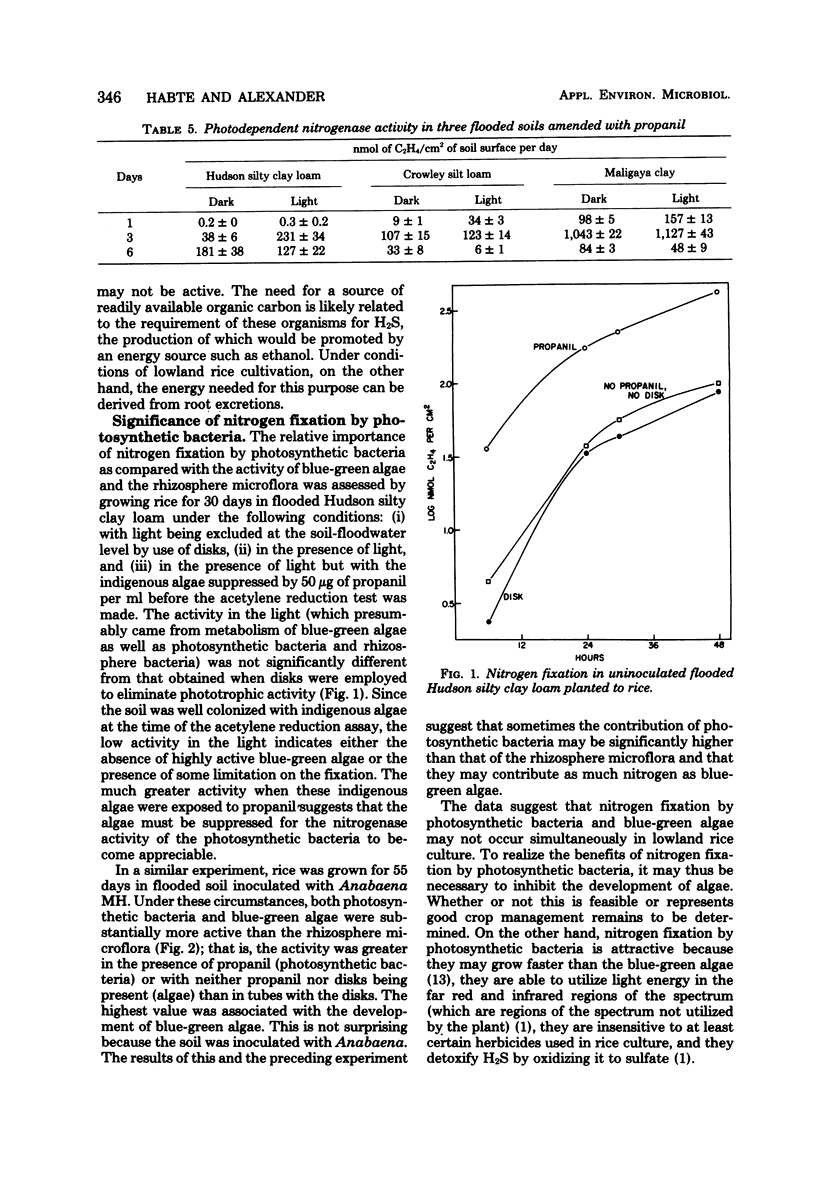
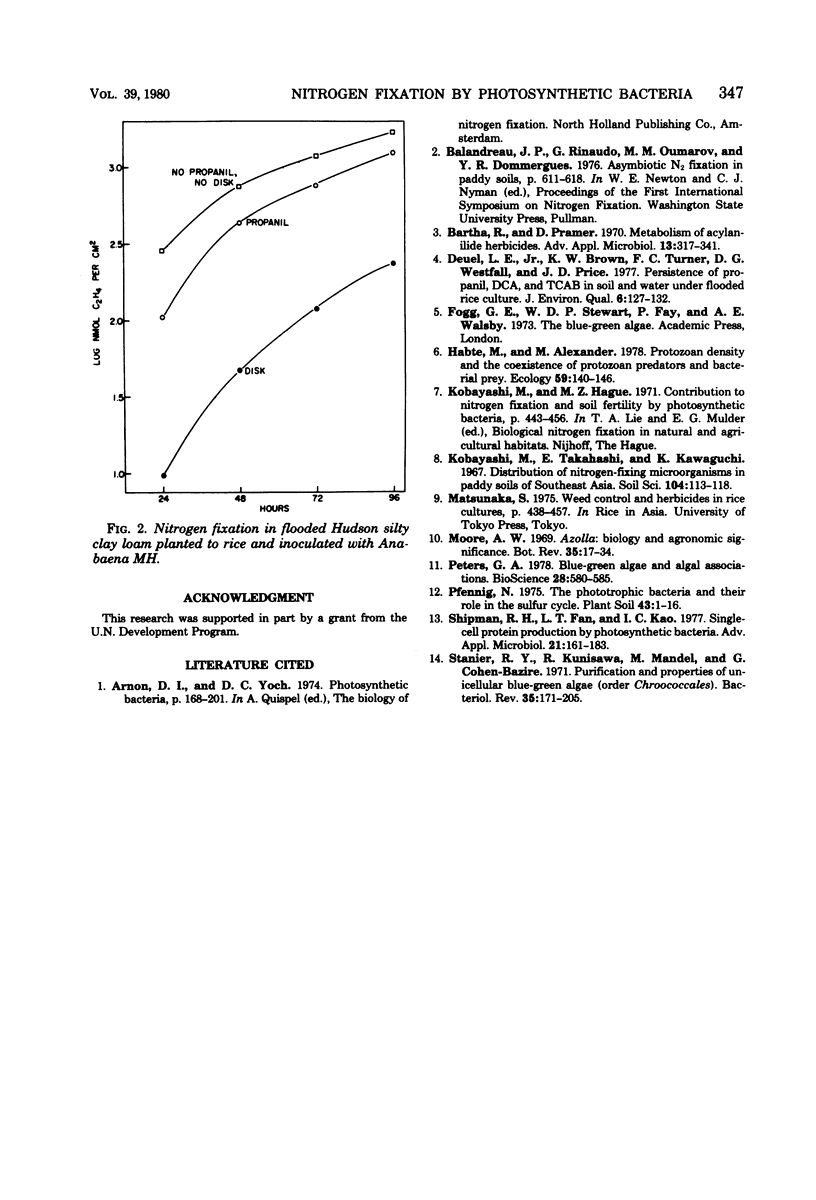
Selected References
These references are in PubMed. This may not be the complete list of references from this article.
- Shipman R. H., Fan L. T., Kao I. C. Single-cell protein production by photosynthetic bacteria. Adv Appl Microbiol. 1977;21:161–183. doi: 10.1016/s0065-2164(08)70041-8. [DOI] [PubMed] [Google Scholar]
- Stanier R. Y., Kunisawa R., Mandel M., Cohen-Bazire G. Purification and properties of unicellular blue-green algae (order Chroococcales). Bacteriol Rev. 1971 Jun;35(2):171–205. doi: 10.1128/br.35.2.171-205.1971. [DOI] [PMC free article] [PubMed] [Google Scholar]


